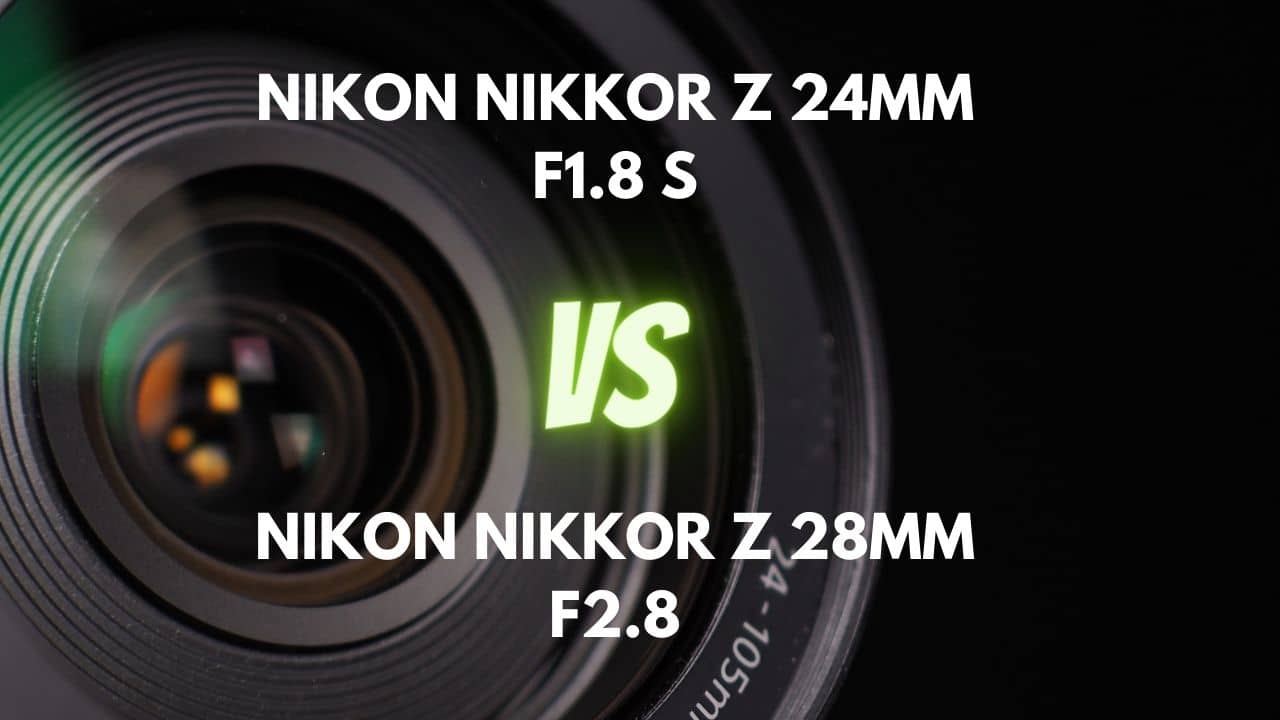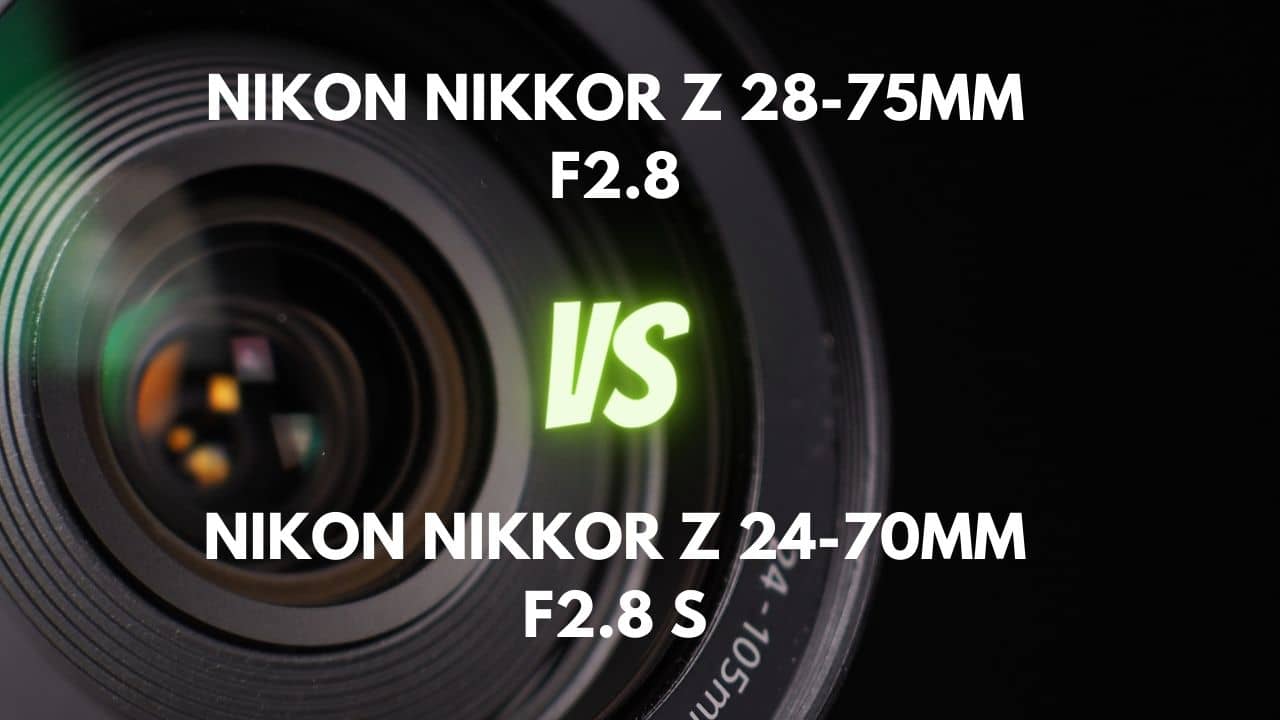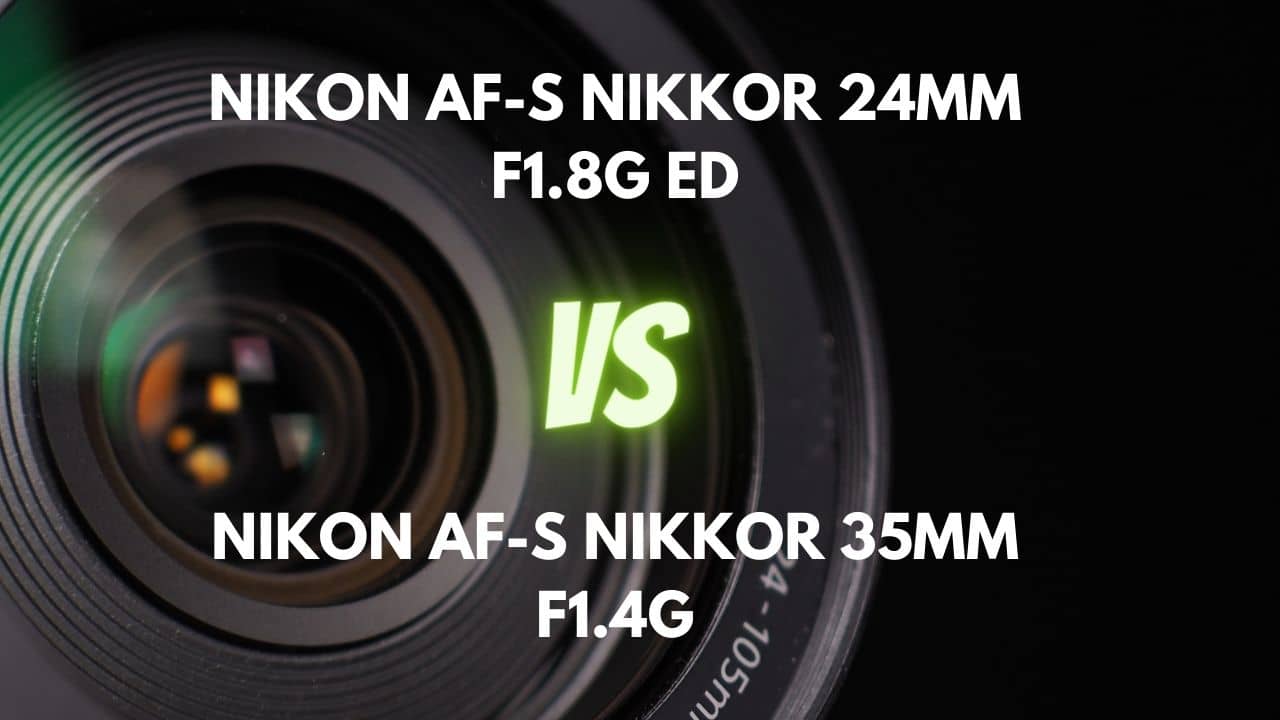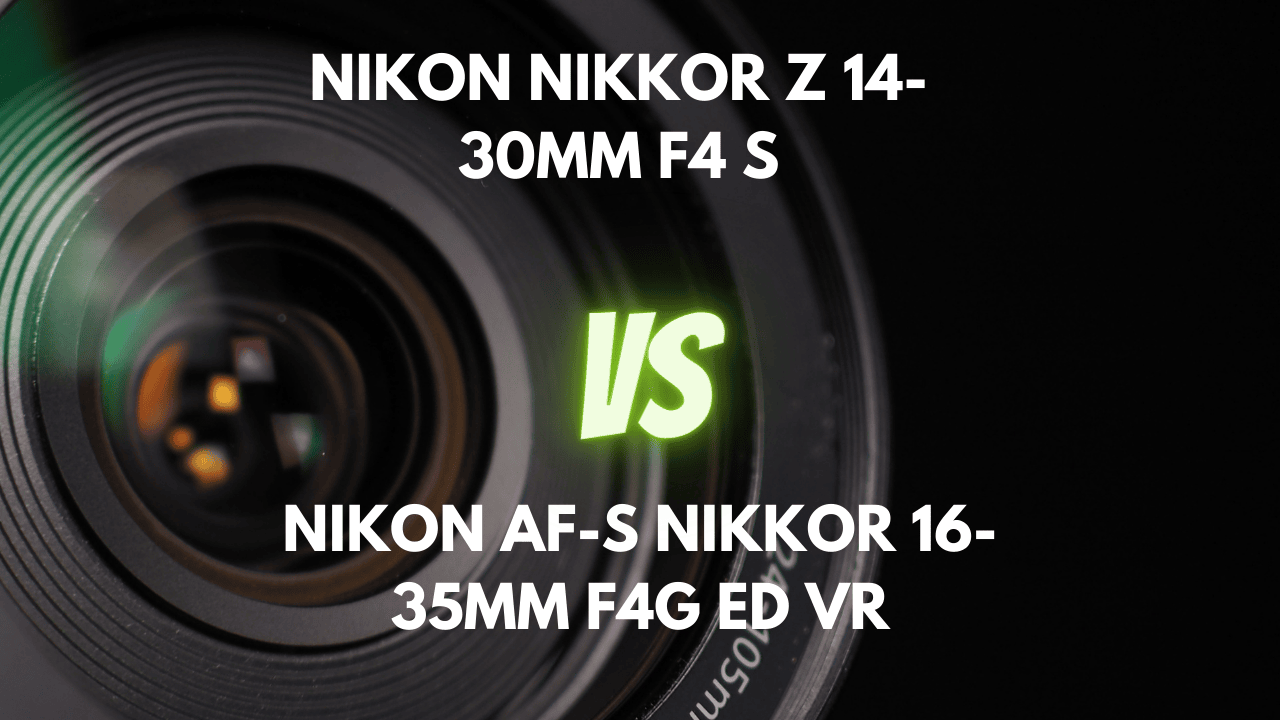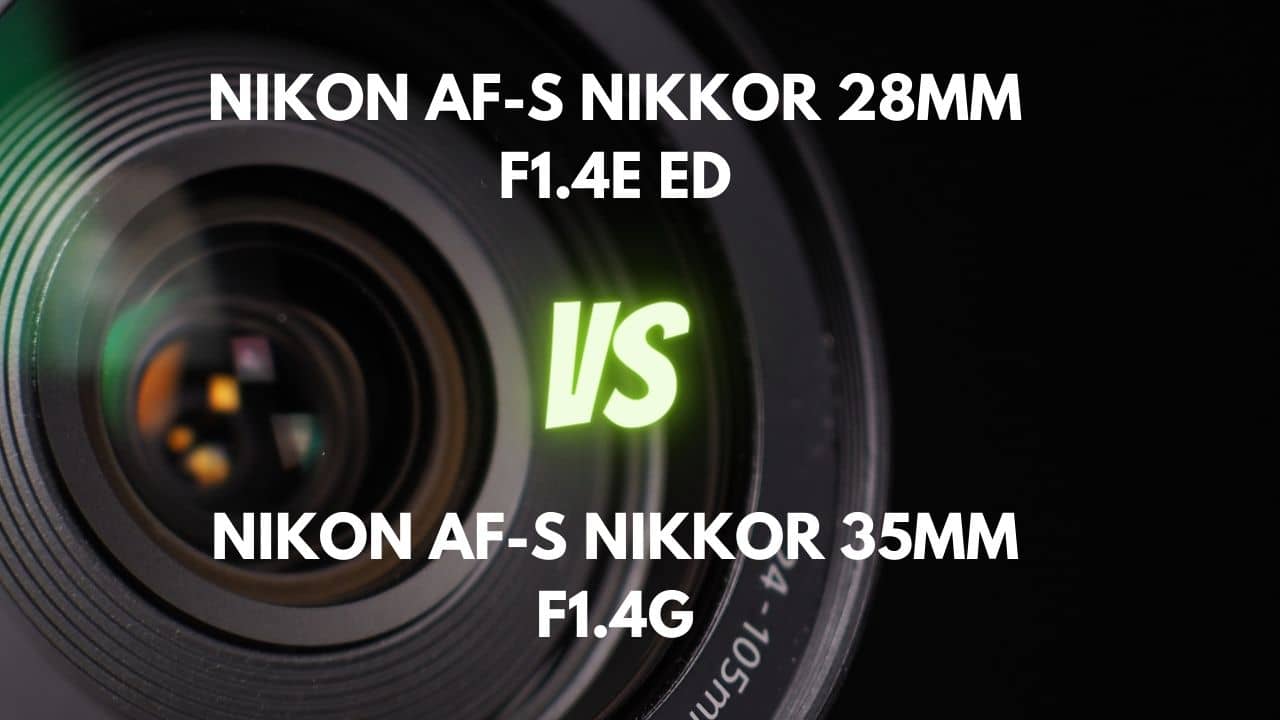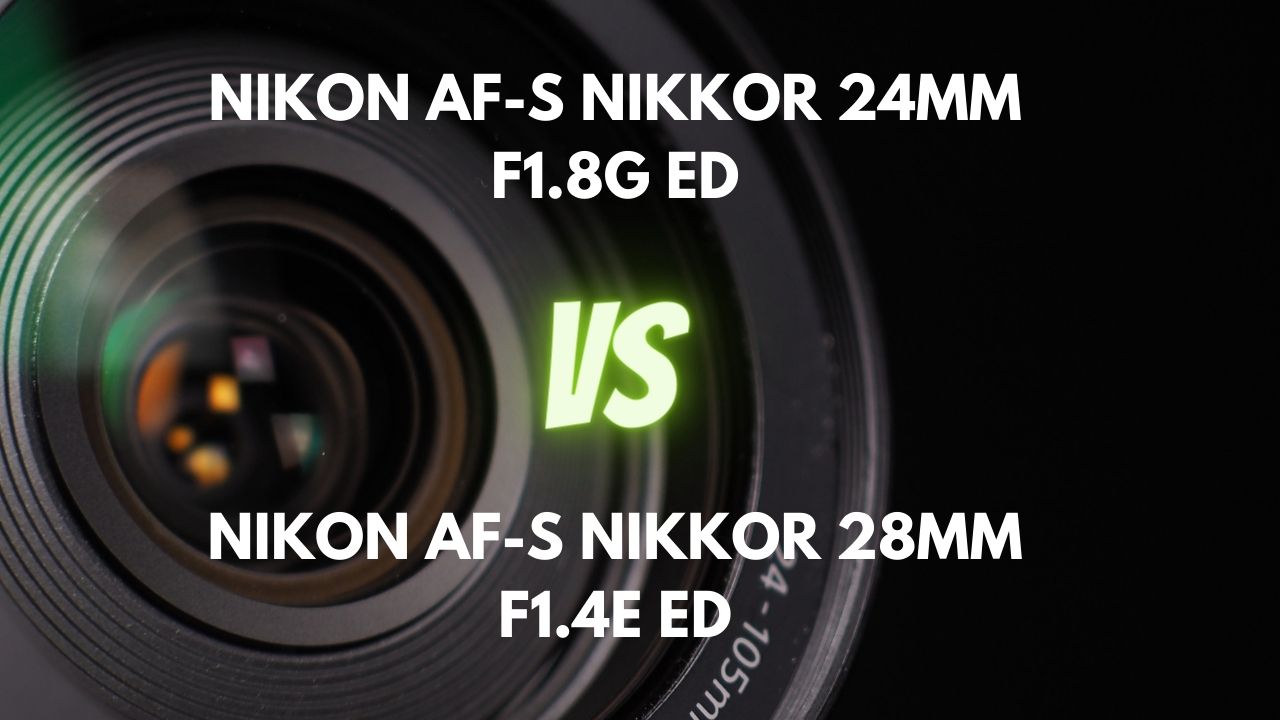Welcome, photography enthusiasts, to a deep dive into a lens showdown that’s been the talk of the town: the Nikon 24-85mm f/3.5-4.5 versus the Nikon 24-70mm f/2.8!
As photographers, we know that every shot is a story waiting to be told, and the pen to our visual prose is often the lens on our camera. But with so many options out there, how do we find the right fit for our unique vision?
If you’ve been grappling with such decisions, particularly between the versatile 24-70mm and the more extended range of the 24-85mm, then you’ve come to the right place. Whether you are a seasoned professional looking to invest in an all-around workhorse, a travel enthusiast seeking the perfect lens for capturing breathtaking landscapes, or a passionate hobbyist striving to freeze life’s precious moments into beautiful memories, this comparison might just be your guiding light.
In this comprehensive comparison, we’ll delve into the nitty-gritty details of these two lenses’ performance across a spectrum of parameters. We’ll dissect their attributes in handling various genres of photography – from portraiture to architecture, from street photography to capturing high-speed events, and more. We aim to help you discern which lens can truly enhance your creative expression and storytelling.
By exploring this side-by-side analysis, you’re not just discovering the unique strengths and trade-offs of these two lenses, but you’re also embarking on a journey to deepen your understanding of lens selection based on your photographic style and needs.
So, buckle up and get ready to take a step closer to finding your perfect lens match!
Let’s unravel this optical enigma, one spec at a time.
Overview
| Nikon AF-S NIKKOR 24-85mm F3.5-4.5G ED VR | Nikon AF-S NIKKOR 24-70mm F2.8E ED VR | |
|---|---|---|
| Max Aperture | F3.5-4.5 | F2.8 |
| Aperture Type | Variable | Fixed |
| Focal Range (mm) | 24-85 | 24-70 |
| Mount Type | Nikon F (FX) | Nikon F (FX) |
| Max Format | 35mm FF | 35mm FF |
| Zoom Ratio (X) | 3.5 | 2.9 |
The Nikon 24-85mm f/3.5-4.5 has a maximum aperture of f/3.5-4.5, indicating that it’s a variable aperture lens. This means that the maximum aperture changes as you zoom in or out. At 24mm, the maximum aperture is f/3.5, and it decreases to f/4.5 as you reach 85mm. Given this, the lens may perform less optimally in low light conditions, especially at longer focal lengths, and could require higher ISO settings or slower shutter speeds, potentially increasing image noise or motion blur.
However, variable aperture lenses are typically more affordable and lighter in weight, which might appeal to hobbyist photographers or those on a budget. The focal range of 24-85mm gives it a slightly longer zoom reach compared to the 24-70mm lens, potentially offering more versatility in framing and composition.
On the other hand, the Nikon 24-70mm f/2.8 boasts a fixed maximum aperture of f/2.8. This means the maximum aperture remains constant across the entire focal range, from 24mm to 70mm, which can provide better performance in low light conditions. Fixed aperture lenses generally offer better image quality, with less distortion, chromatic aberration, and vignetting across the zoom range. However, they are often heavier, more expensive, and have a sturdier build quality, as they’re designed with professional photographers in mind.
Both lenses are designed for the Nikon F (FX) mount and are compatible with full-frame 35mm cameras. This ensures a broad compatibility with Nikon’s DSLR and mirrorless cameras equipped with this mount, and the full-frame format can deliver superior image quality, low light performance, and a wider field of view compared to cropped sensors.
In conclusion, if you prioritize low light performance, consistent image quality across the zoom range, and don’t mind the additional weight and cost, the 24-70mm f/2.8 lens is the superior choice. However, if you value a longer zoom reach, lighter weight, and more affordable price, and are willing to compromise slightly on low light performance and image quality, then the 24-85mm f/3.5-4.5 lens might be a better fit. It’s important to consider the type of photography you’re most interested in, as well as practical factors like your budget and how much weight you’re willing to carry.
Design and Ease of Use
| Nikon AF-S NIKKOR 24-85mm F3.5-4.5G ED VR | Nikon AF-S NIKKOR 24-70mm F2.8E ED VR | |
|---|---|---|
| Diameter x Length (mm) | ⌀78×82mm | ⌀88×154.5mm |
| Weight (gr) | 485 | 1070 |
| Filter Thread (mm) | 72 | 82 |
| Weather Sealing | No | Yes |
| Zoom Method | Rotary (extending) | Rotary (internal) |
| Distance Scale | Yes | Yes |
| DoF Scale | No | No |
| Hood Supplied | Yes | Yes |
| Hood Code | HB-63 | HB-74 |
Starting with the Nikon 24-85mm f/3.5-4.5, its dimensions are ⌀78×82mm, significantly smaller than its counterpart. This compactness potentially makes it easier to carry around, especially beneficial for long shoots or travel photography. Its weight, at 485 grams, is less than half of the 24-70mm lens. This lighter weight can make the camera setup feel less front-heavy, improving handling comfort and reducing fatigue during extended use.
However, this lens uses an extending rotary zoom method, which means it physically extends as you zoom in or out. This extension might make the lens more cumbersome to handle, especially when zoomed in to the maximum focal length. It can also shift the camera’s balance, potentially making it harder to maintain stability during shooting. On the bright side, the simpler design of the extending rotary zoom method might make this lens more affordable and potentially more durable.
Turning to the Nikon 24-70mm f/2.8, its dimensions are ⌀88×154.5mm, making it considerably larger than the 24-85mm lens. This size might make it a bit more challenging to carry around and handle, especially during long shoots or while traveling. The lens is also considerably heavier, weighing 1070 grams. This additional weight might cause the camera setup to feel front-heavy and unbalanced, which could lead to discomfort during extended use.
However, the 24-70mm lens uses an internal rotary zoom method, meaning the lens does not change its physical size when you zoom in or out. This feature maintains a consistent balance during shooting, making it potentially easier to handle. The internal zoom method also makes it easier to weather-seal the lens, offering better protection from dust, moisture, and other environmental factors. However, the more complex design of the internal rotary zoom can result in a higher price and potentially more parts that could malfunction.
In conclusion, both lenses have their advantages and trade-offs. The 24-85mm lens is smaller and lighter, making it more portable and comfortable for long shoots, but its extending rotary zoom method can be more cumbersome to handle. On the other hand, the 24-70mm lens, despite being larger and heavier, offers a more stable shooting experience due to its internal rotary zoom mechanism and might offer better environmental protection. Therefore, if portability and ease of handling are of utmost importance, the 24-85mm lens may be a more suitable choice. However, if you prioritize shooting stability and lens durability, the 24-70mm lens could be the better option.
Lens Mount and Barrel
Starting with the Nikon 24-85mm f/3.5-4.5, its mount is constructed of sturdy metal, enhancing the durability of the lens. The presence of a rubber gasket that envelops the mount offers an extra layer of security against dust and moisture penetration, providing your camera and lens with an added defense against the elements.
The barrel of the 24-85mm lens is crafted from high-quality polycarbonate materials, which offer a robust and solid build while maintaining a relatively lightweight design. The smooth exterior finish and ergonomic bevel contribute to comfortable handling during use. The lens’ size changes while zooming due to the extending nature of the design, but the front element stays fixed thanks to the internal focusing system. This stable front element is a boon for photographers who frequently use filters, such as polarizers, as it does not rotate or extend when focusing.
Now, turning our attention to the Nikon 24-70mm f/2.8, its mount is also metal, offering the same durability and robustness. It incorporates weather sealing with an O-ring to limit the intrusion of dust and water, giving the lens a reliable defense against harsh environmental conditions.
As for the barrel of the 24-70mm lens, it is constructed from a blend of high-quality plastic and metal, which provides a balance between weight, durability, and cost. The rubberized texture finish gives it a premium feel, and could potentially improve the grip and handling of the lens.
In conclusion, both lenses have their strengths when it comes to lens mount and barrel design. The 24-85mm lens with its rubber-gasketed mount and polycarbonate barrel offers a solid build with the added advantage of a non-rotating front element. The 24-70mm lens, on the other hand, has a weather-sealed mount and a barrel made from a blend of plastic and metal, offering a balance of durability, cost-effectiveness, and a premium feel. Therefore, if durability, added weather protection and a non-rotating front element are your top priorities, the 24-85mm lens seems to have the upper hand. If you desire a lens with a blend of robustness, cost-effectiveness, and a premium feel, the 24-70mm lens might be the way to go.
Weather Sealing
The Nikon 24-85mm f/3.5-4.5, to begin with, comes with a fundamental layer of protection against the elements. While it doesn’t lay claim to comprehensive weather resistance, the presence of a rubber gasket encircling the metal lens mount does offer a baseline defense against dust and moisture penetration, safeguarding your camera body from potential environmental damage.
Switching to the Nikon 24-70mm f/2.8, it boasts a more robust approach to weather sealing. The lens mount is not just sealed but comes with a rubber grommet, effectively reducing dust and water ingress. Further sealing measures are deployed internally at the rings, switches, and even the front of the barrel, thus providing comprehensive protection against harsh weather conditions. However, it’s crucial to remember that this lens, while impressively sealed, is not immune to extreme weather conditions, and sudden temperature fluctuations can potentially cause condensation and moisture build-up inside the lens.
Upon comparing these two lenses, it’s apparent that the 24-70mm lens offers superior weather sealing. The comprehensive protection measures incorporated into its design render it more capable of withstanding a variety of environmental conditions. This makes it a great companion for photographers venturing into harsh or unpredictable weather conditions, offering not just the freedom to focus on capturing the perfect shot, but also peace of mind, knowing that their investment is well-protected.
However, if your photography needs are more moderate, and you’re not typically shooting in extreme conditions, the basic protection offered by the 24-85mm lens could suffice. Remember, the perfect lens is always the one that best suits your specific needs and shooting conditions.
Rings
Starting with the Nikon 24-85mm f/3.5-4.5, it incorporates two rings: a zoom ring positioned at the front and a manual focus ring closer to the camera body. The zoom ring, being of ample size and featuring a short throw, facilitates swift adjustment of the composition. However, the tight packing of the 24mm and 35mm focal lengths on the wide-angle side may impede precision. This lens’s zoom action is smooth, well-damped, and free from zoom creep.
The manual focus ring, though slim and featuring a short travel path, suffers from some slack, which can make precise focusing at the longer end slightly challenging. While the focus ring is not incredibly smooth, the lens compensates with a quiet autofocus operation. A point to note is the lens’s internal focusing (IF) system, which ensures the front element and filter thread do not rotate, making it compatible with polarizing filters. The lens extends when zooming but does not wobble, ensuring stability.
Now, shifting our focus to the Nikon 24-70mm f/2.8, it features a rubberized zoom ring located at the rear and a manual focus ring towards the front. The zoom ring offers a tactile grip with raised ribs and smooth rotation, turning about 90 degrees from wide to telephoto in a quarter turn.
On the other hand, the focus ring, though narrower, provides a solid grip and smooth operation. This lens includes a windowed distance scale but lacks any infrared or depth-of-field markings on the focus indicator. While there isn’t an extension lock switch on the zoom ring, the lens hood remains static while zooming, thanks to an inner barrel that moves in and out.
To reach a verdict, if we judge the lenses on the criteria of ergonomics, precision, control, and compatibility, the 24-70mm lens presents a superior design in terms of its rings. Its rings offer a better tactile feel and smoother operation, providing more precise control over focus and zoom adjustments. However, both lenses could benefit from including depth-of-field marks or an infrared focus index for enhanced utility.
Switches/Buttons
Looking first at the Nikon 24-85mm f/3.5-4.5, it showcases a minimalist design with two primary switches located on the side of the lens barrel. The first switch, labeled M/A and M, governs the autofocus and manual focus functionality. In M/A mode, you can use autofocus with the added convenience of manual focus override. In contrast, the M mode grants full manual focus operation.
The second switch activates or deactivates the Vibration Reduction (VR) system, a feature that aids in image stabilization. However, it lacks the advanced VR modes such as Active or Normal. The lens does not incorporate any additional switches or buttons, like focus limiters or macro lockout switches, streamlining the user experience by focusing on core functions.
Switching over to the Nikon 24-70mm f/2.8, it is equipped with two switches on the side of the lens barrel. The first one is the AF/MF switch, which allows you to transition smoothly from autofocus to manual operation without significant time delay.
The second switch, the VR switch, offers more versatility with options for Off, Normal, or Active VR modes, providing an enhanced degree of control over image stabilization. However, these switches, while clearly labeled, are identical to the touch, which might cause confusion when trying to select a specific switch quickly, especially if you are relying on tactile feedback alone.
In conclusion, both lenses provide easy access to essential features through their switches, but they differ in terms of complexity and versatility. The 24-85mm lens adopts a more minimalist and user-friendly approach, making it suitable for those who prefer straightforward functionality. On the other hand, the 24-70mm lens offers more nuanced control over image stabilization with its VR modes, but its identical-feeling switches may present a minor usability issue. Therefore, the 24-70mm lens is superior in terms of the versatility of its switches and buttons, although the ultimate choice should depend on your shooting style and preference for simplicity or control.
Filter Thread
Starting with the Nikon 24-85mm f/3.5-4.5, it comes with a 72mm filter thread, fabricated from high-quality materials. The lens uses an internal focusing system (IF), meaning the front element and the filter thread remain stationary during focusing. This non-rotating design simplifies the use of filters, as it eliminates the need for constant readjustments when using polarizing or graduated filters.
Turning to the Nikon 24-70mm f/2.8, it features an 82mm filter thread size, a step up from the previous model, which necessitates larger filters. Similar to the 24-85mm lens, it utilizes an internal focusing mechanism. The advantage here is that the filter position stays fixed while focusing, which is beneficial when working with circular polarizers or graduated neutral density filters.
Looking at these two lenses, their filter threads share a significant similarity in their non-rotating design due to the internal focusing system. This feature is a big plus for photographers who frequently use filters as it simplifies their workflow. However, there’s a noticeable difference in their sizes. The larger 82mm filter thread on the 24-70mm lens might demand a higher investment in filters due to its size. It could also add a bit more weight to your gear, which could influence handling and portability.
The choice between these two will largely depend on your existing collection of filters and your budget. If you already have 72mm filters and prefer a lens with a lighter, more compact form factor, the 24-85mm lens would be a superior choice. Conversely, if you are not constrained by budget and prefer the versatility offered by the common and widely available 82mm filters, the 24-70mm lens would be the better option. Remember, you can also consider using step-up rings to adapt smaller filter threads to larger filters.
Lens Hood
Starting with the Nikon 24-85mm f/3.5-4.5, it includes an HB-63 bayonet lens hood in the package. This petal-shaped hood is constructed from high-quality plastic and is designed with a cutaway for optimal shading and reduced lens flare. The hood mounts securely, offering a stable fit without any wobble when attached. For convenience during transportation, it can be reversed onto the lens. However, it’s worth noting that when the hood is attached in this reversed manner, the lens’s zoom ring may become harder to manipulate, suggesting that it should be repositioned to its regular orientation while shooting.
On the other hand, the Nikon 24-70mm f/2.8 is supplied with an HB-74 model lens hood. This petal-style hood, also made from plastic, incorporates a lock mechanism that ensures a secure and tight fit onto the lens. It’s designed to reverse for storage on the lens and its deep construction aids in minimizing lens flare and safeguarding the front element. The hood is attached forward of the gold stripe on the lens barrel, not at the very front, which accommodates an inner barrel that moves during zooming. This design means that the hood does not need readjustment while zooming, though its coverage at 24mm is somewhat limited.
Comparatively, both lens hoods are constructed from quality plastic, offer secure attachment, and can be reversed onto the lens for convenience. They also share the petal-shaped design, which is efficient for reducing lens flare. However, the 24-70mm lens hood offers a lock mechanism for extra security, and its design allows for no readjustment while zooming, making it slightly more user-friendly.
In conclusion, while both lens hoods serve their purpose well, the 24-70mm lens hood’s secure lock mechanism and the convenience of not needing readjustment during zooming gives it a slight edge over the 24-85mm lens hood. It’s a well-thought-out accessory, designed to offer an improved user experience.
Focusing and Optical Stabilization
| Nikon AF-S NIKKOR 24-85mm F3.5-4.5G ED VR | Nikon AF-S NIKKOR 24-70mm F2.8E ED VR | |
|---|---|---|
| Autofocus | Yes | Yes |
| AF Motor | Silent Wave Motor | Silent Wave Motor |
| Rotating Front Element | <Unknown> | Does not rotate on focusing |
| Min Focus Distance | 0.38m | 0.41m(24,28,70mm);0.38m(35-50mm) |
| Max Magnification (X) | 0.22 | 0.27 |
| Full-Time Manual Focus | Yes | Yes |
| Focus Method | Internal | Internal |
Focusing Performance
The Nikon 24-85mm f/3.5-4.5 offers an autofocus performance that is generally swift, precise, and quiet, due to its silent wave motor. This results in an almost soundless focusing experience, which can be particularly beneficial in situations requiring discretion, such as wildlife or event photography. It takes approximately 0.8 seconds to focus from infinity to 0.38m, and around 0.6 seconds to go from infinity to 0.85m. This speed is quite respectable and should suffice for many types of photography. In lower light conditions, this lens continues to maintain its focus accuracy. It offers quick initial autofocus acquisition, effectively locking onto subjects.
Additionally, it incorporates manual focus override for instant adjustments, although there is a small degree of slack, making precise focusing at the long end slightly challenging. Like the 24-70mm, this lens also features an internal focusing design, which keeps the length constant regardless of focus or zoom settings.
In contrast, the Nikon 24-70mm f/2.8 delivers an extremely swift and responsive autofocus performance, enabling rapid subject acquisition and focus shifting. Its AF-S drive is virtually silent, making it an excellent choice for video recording where ambient noise can be an issue. The autofocus accuracy of this lens is outstanding in both daylight and low-light conditions, ensuring sharp focus in a wide range of environments. The focus ring on this lens has no slack, facilitating easy manual focus override and smooth manual focus action.
Similar to the 24-85mm lens, this lens also features an internal focusing design, maintaining a constant length regardless of the focus and zoom settings. Notably, it does not exhibit focus breathing, which is a key advantage for videographers as it ensures a consistent angle of view when changing focus.
When comparing the two, both lenses offer fast, accurate, and quiet autofocus performance and an internal focusing design. However, the 24-70mm lens edges out the 24-85mm with its more responsive autofocus, better low-light performance, no-play focus ring, and lack of focus breathing. These attributes enhance user experience, particularly for videographers and photographers capturing fast-moving subjects or working in low light conditions. Thus, in terms of focusing performance, the 24-70mm lens proves to be superior.
Optical Stabilization
The Nikon 24-85mm f/3.5-4.5 boasts Nikon’s second-generation Vibration Reduction (VR II) system, offering up to 4 stops of stabilization. However, the tangible results can vary, and in practical tests, up to three stops of longer shutter times were typically achievable. This variance doesn’t diminish its value, as it still provides a significant boost to handheld shooting stability.
The VR operation is impressively quiet and stabilizes the image in the viewfinder in a fraction of a second, minimizing lag. This feature is particularly beneficial when shooting handheld in low-light conditions or at the longer end of the focal range, where camera shake can be more pronounced. The lens can effectively allow for slower shutter speeds, such as shooting at 85mm with a 1/10 sec exposure, approximately three stops slower than the conventional guideline for sharp handheld images.
On the other hand, the Nikon 24-70mm f/2.8 also features optical stabilization (VR) enabling up to 4 stops of longer exposure times. This lens exhibits excellent image stabilization performance, even at slower shutter speeds. It also offers Normal and Active modes of stabilization, providing flexibility for different shooting conditions.
The autofocus, powered by a swift and almost silent AF-S drive, works seamlessly with the VR system, which operates noiselessly. Notably, the lens can capture sharp handheld shots at shutter speeds as slow as 1/5-second at 70mm, which is quite commendable.
When comparing these two lenses, both feature up to 4 stops of stabilization, offering enhanced image quality at slower shutter speeds. However, the 24-70mm lens, with its dual stabilization modes and compatibility with the fast AF-S drive, provides a slight edge, especially at longer focal lengths. It also enables marginally longer handheld exposures at 70mm compared to the 24-85mm lens at 85mm. Thus, based on the given information, the optical stabilization of the 24-70mm lens appears to be superior.
Image Quality
| Nikon AF-S NIKKOR 24-85mm F3.5-4.5G ED VR | Nikon AF-S NIKKOR 24-70mm F2.8E ED VR | |
|---|---|---|
| Special Elements | 1 ED glass element, 3 aspherical elements | 3 aspherical and 2 ED elements + nano crystal and fluorine coatings |
| Diaphragm Blades | 7 | 9 |
| Circular Aperture | Yes | Yes |
Aberration
The Nikon 24-85mm f/3.5-4.5 is known to exhibit a significant level of chromatic aberration, especially noticeable at the shortest focal length of 24mm, with levels escalating close to 4 pixels in the most extreme corners of the frame. However, this aberration tends to diminish as both the focal length and aperture increase, dropping to more acceptable levels.
The lens handles longitudinal chromatic aberration—color fringing in the depth of field—fairly well. Although the presence of chromatic aberration might be a concern, it’s worth noting that this issue can be effectively corrected using post-processing software tools like Lightroom and Photoshop.
On the contrary, the Nikon 24-70mm f/2.8 demonstrates varying levels of chromatic aberration. At the 35mm focal length, lateral chromatic aberration—a type of distortion where the lens cannot focus all colors to the same convergence point—rises to a peak value above 3 pixels at the image borders. Longitudinal chromatic aberration is also present, resulting in a faint magenta coloration in the foreground and greenish hues in the background.
Despite these issues, the lens performs well regarding other forms of aberration. Coma—an optical effect causing point sources to appear distorted, especially in night shots—is discernible in the full-frame corners at varying apertures and focal lengths but is not significant. There’s no significant spherochromatism—variation of the spherical aberration with wavelength—and out-of-focus highlights remain reasonably neutral. Like the 24-85mm lens, chromatic aberration in the 24-70mm lens can be corrected in post-production.
In a comparative analysis, both lenses demonstrate chromatic aberration, albeit at different focal lengths. The 24-85mm lens shows greater chromatic aberration at the shortest focal length (24mm), while the 24-70mm lens exhibits higher levels at 35mm. However, the 24-70mm lens handles other forms of aberration better, exhibiting less significant coma and virtually no spherochromatism. Therefore, in terms of aberration control, the 24-70mm lens appears to have a slight edge over the 24-85mm lens, especially if you’re looking for a lens that offers a well-rounded performance in managing various forms of aberration.
Sharpness
The Nikon 24-85mm f/3.5-4.5 displays satisfactory center sharpness, with the peak performance usually observed between the apertures of f/5.6 and f/11, contingent upon the focal length. However, corner sharpness tends to be weaker, particularly at wider apertures.
This sharpness deficiency in the corners improves as the aperture is reduced, often reaching an optimum between the f/8 and f/16 settings. When the lens is wide open, the sharpness levels are less inspiring, especially in the corners. However, when the aperture is reduced, the sharpness levels increase, with the sharpest images typically observed between the apertures of f/8 and f/11.
In contrast, the Nikon 24-70mm f/2.8 demonstrates varying levels of sharpness, depending on both the aperture and focal length. Center sharpness across the range is generally commendable, although the widest aperture tends to produce slightly softer images. The most noticeable decrease in sharpness happens at 50mm and beyond, with the corners being the most affected.
Nevertheless, by narrowing down the aperture to f/5.6, the sharpest results are achieved overall. The lens also exhibits satisfactory performance when coupled with a teleconverter, despite a possible minor loss in sharpness. The aperture yielding the greatest sharpness is generally between f/5.6 and f/8, depending on the focal length.
Comparing the two, both lenses offer good center sharpness, but they differ in their corner sharpness and the apertures at which maximum sharpness is achieved. The 24-85mm lens improves its corner sharpness significantly when the aperture is reduced, making it a good choice for photographers who need sharp images across the frame, like those specializing in landscape or architecture. However, the 24-70mm lens maintains better sharpness at wider apertures, which could be beneficial for scenarios where a shallow depth of field or low light shooting is required. Overall, while the 24-85mm lens does perform well, the 24-70mm lens provides a more consistent sharpness across various focal lengths and apertures, making it the superior lens in terms of sharpness.
Bokeh Quality
The Nikon 24-85mm f/3.5-4.5 demonstrates a variable bokeh quality, possessing both appealing features and a few weaknesses. Its design incorporates a 7-blade rounded iris diaphragm, which contributes to a relatively smooth and agreeable bokeh in the foreground. However, the background bokeh often experiences outlining, which can lead to a jittery, less attractive appearance. Additionally, the lens’s limited maximum aperture of f/4.5 somewhat hampers its capacity to achieve pronounced subject isolation and consequently deliver a more appealing bokeh.
On the other hand, the Nikon 24-70mm f/2.8 offers a fair bokeh quality, although it’s not exceptional. In terms of the transition zone and the background blur, the lens can sometimes produce a somewhat agitated appearance. There might also be outlining and the presence of a cat’s eye effect due to mechanical vignetting at larger apertures. Furthermore, some bokeh fringing might be visible at the edges. However, the lens has the capability to yield three-dimensional images where the sharply focused subject appears to leap out from the softer backgrounds. Yet, for superior bokeh quality, it’s suggested to opt for a specialized portrait lens.
In comparing these two lenses, it’s evident that both exhibit certain limitations in their bokeh quality. The 24-85mm lens’s bokeh is affected by its limited maximum aperture and the presence of outlining in the background bokeh. Similarly, the 24-70mm lens suffers from some disturbances in the transition zone and background blur, and may exhibit outlining and bokeh fringing. However, the 24-70mm lens does have the advantage of being able to produce three-dimensional images, enhancing subject-background separation. Therefore, despite its shortcomings, the 24-70mm lens edges out the 24-85mm lens in terms of bokeh quality. Nonetheless, for truly superior bokeh, a specialized portrait lens would be a more suitable choice.
Flare/Ghosting
The Nikon 24-85mm f/3.5-4.5 demonstrates a commendable performance in handling flare and ghosting, especially when juxtaposed with older lenses that lack advanced coating. The lens doesn’t consistently perform as strongly as some Nano-coated Nikkor lenses, but under certain conditions that typically induce flare and ghosting, the lens can sometimes yield minimal or even no ghosting.
This showcases its respectable resistance. However, employing low-quality glass filters or shooting through a glass window can exacerbate ghosting and flare. That said, proper placement of the light source can often practically negate these optical anomalies, particularly in the absence of any filters.
On the other hand, the Nikon 24-70mm f/2.8 exhibits good resilience to flare and ghosting, especially when the source of light is distinctly outside the frame of the image. Nonetheless, when the light source is near but not within the frame’s corner, it can induce some flare.
The lens’s Nano Crystal Coat aids in mitigating flares and ghosting, but shooting against the sun can still lead to some artifacts. The extent of ghosting and flare is contingent on the position of the bright light source within the frame. Strategic placement of the light source can often alleviate these issues. Although the lens generally resists flare well, some modest spots with veiling flare may occur when extremely bright lights are within the image area.
In comparing the two lenses, both demonstrate a respectable capacity to handle flare and ghosting, with their performance largely dependent on the light source’s position. However, the 24-70mm lens, equipped with a Nano Crystal Coat, offers a slight edge in managing flare and ghosting, even though it might still produce some artifacts when shooting against the sun. Therefore, the 24-70mm lens performs slightly better in handling flare and ghosting compared to the 24-85mm lens.
Vignetting
The Nikon 24-85mm f/3.5-4.5 presents noticeable vignetting, especially at 24mm and maximum aperture, with the corners darkening to a significant extent of up to 4 EVs. Reducing the aperture to f/5.6 or smaller noticeably mitigates the vignetting, though it remains evident at shorter focal lengths. As the focal length is extended, vignetting diminishes, with the least light falloff observable at the lens’s longest focal lengths.
In contrast, the Nikon 24-70mm f/2.8 displays vignetting, which is more evident at wider apertures and shorter focal lengths. The degree of vignetting is more significant than in its predecessor, but considerably lessens by reducing the aperture. Even at f/5.6, vignetting is still perceptible, but it tends to become largely inconsequential from that point forward. Additionally, the lens offers the flexibility of correcting vignetting through post-processing software, where it can be conveniently addressed with a simple click.
When comparing the two lenses, both exhibit vignetting, particularly at shorter focal lengths and wider apertures. However, the 24-70mm lens displays a more manageable vignetting that can be significantly reduced by stopping down the aperture or can be easily corrected in post-processing. Conversely, the 24-85mm lens demonstrates significant vignetting at shorter focal lengths and maximum aperture, which can be reduced but still remains noticeable even when the aperture is reduced. Therefore, in terms of managing vignetting, the 24-70mm lens proves to be the superior choice.
Distortion
The Nikon 24-85mm f/3.5-4.5 exhibits noticeable distortion, especially at the wide end (24mm) with a substantial amount of barrel distortion quantified at -3.70%. As the focal lengths extend, the distortion transitions from barrel to pincushion, becoming evident around 35mm and significantly increasing at 85mm. This degree of distortion is common in cost-effective zoom lenses. Yet, it can be mitigated through post-processing software like Lightroom or Photoshop.
On the other hand, the Nikon 24-70mm f/2.8 displays varying levels of distortion across different focal lengths. Barrel distortion is most prominent at 24mm, while pincushion distortion is evident from 35-70mm. Nikon may have permitted this distortion to ensure better sharpness towards the corners. The distortion, though concerning for some photographers, is not a significant issue as it can be easily corrected in post-processing software like Lightroom.
When comparing the two, both lenses exhibit distortion that changes with focal lengths. The 24-70mm lens, however, has a more manageable degree of distortion and demonstrates a design trade-off in favor of better corner sharpness. Conversely, the 24-85mm lens exhibits significant distortion, especially at the widest and longest focal lengths. Therefore, in terms of distortion control, the 24-70mm lens is the superior choice, considering its manageable level of distortion and potential for better corner sharpness.
Final Verdict
Upon a comprehensive review of the Nikon 24-85mm f/3.5-4.5 and Nikon 24-70mm f/2.8, it becomes clear that each has distinct strengths catered towards different genres of photography and user preferences.
For those interested in travel and street photography, where light weight and a compact size are critical, the 24-85mm lens, with its broader zoom range and manageable distortion, can be an ideal companion. It also provides an attractive option for those on a budget, while still offering commendable image quality.
However, for professional photographers or enthusiasts who prioritize image quality and versatility, the 24-70mm lens stands out as a superior choice. Its consistent sharpness across various focal lengths and apertures, coupled with better distortion control and enhanced low light performance, make it a reliable workhorse for a range of genres, including portraiture, events, and even landscape photography. Its superior weather sealing also makes it more suited for outdoor photography in challenging conditions.
The 24-70mm lens also excels in terms of autofocus performance and optical stabilization, making it an excellent choice for photographers who often shoot moving subjects or work in low light conditions, such as wedding or sports photographers. Its better performance in handling aberrations, flare, and ghosting, as well as a more appealing bokeh, further contribute to its overall superior image quality.
In conclusion, while the 24-85mm lens offers compelling advantages such as greater portability and affordability, the 24-70mm lens takes the lead in most aspects of optical performance and build quality. Therefore, depending on your photography needs, budget, and preference for lens weight and size, the choice between these two lenses should align with these considerations to ensure the best fit for your photographic journey.

